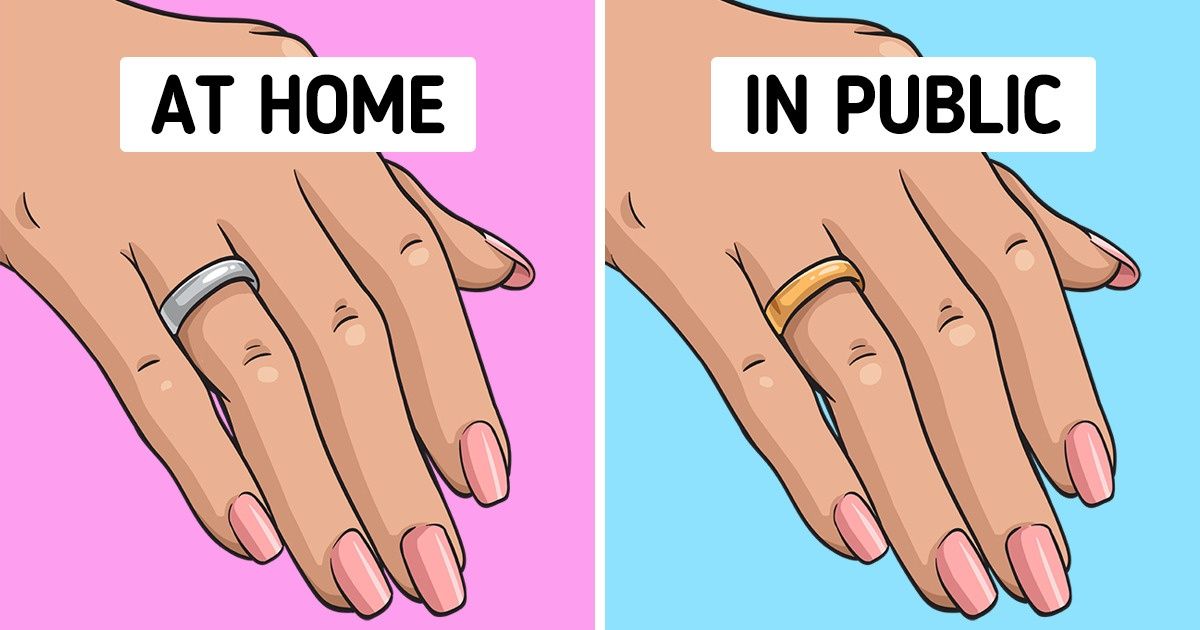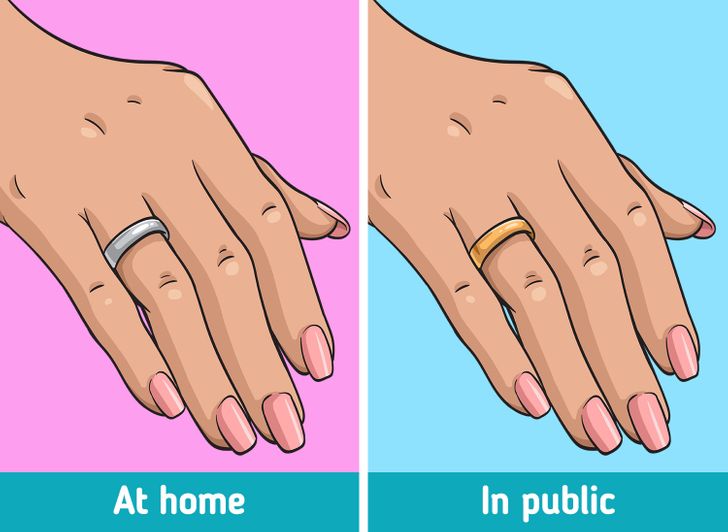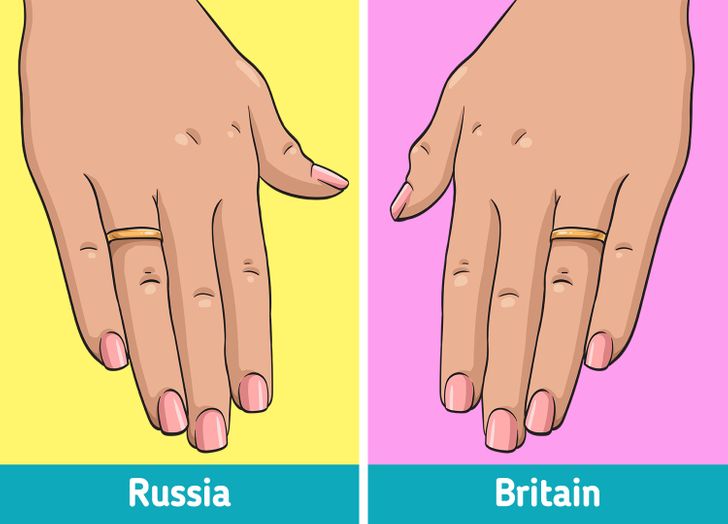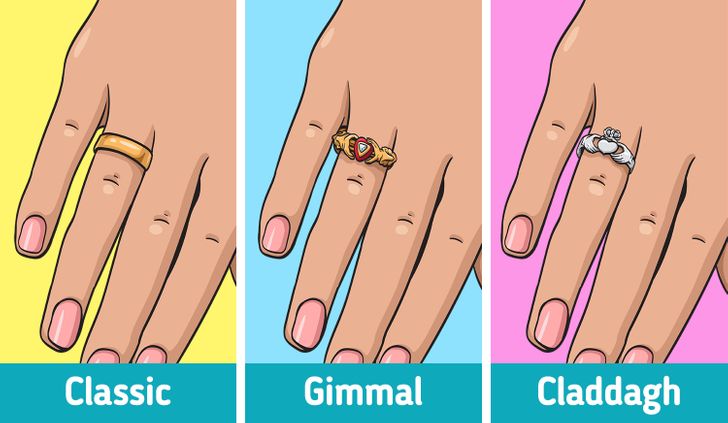How Wedding Rings Are Worn in Different Countries

A wedding ring can not only reveal one’s marital status but also where he or she lives and the traditions they have.
5-Minute Crafts found out how people wear weddings rings and why people from different countries do it differently.
When the tradition of exchanging rings appeared

It’s not known where and when the tradition of exchanging rings upon getting married first appeared — but it was definitely in Ancient Egypt and Ancient Greece. At first, the rings were made from plant stems, leather, and ivory. Then, in the early days of Ancient Rome, these materials were replaced with metal. Usually, iron was used, but in rare cases, men gave brides rings made from gold or silver to prove that they trusted her with their precious belongings. Later, in the second century BCE, Roman brides would get 2 rings: a gold one for the public, and an iron one for home when she was doing her house chores. This custom remained popular for several centuries.
In the Middle Ages, the tradition of giving a wedding ring to a bride became part of the marriage ceremony. And in the Renaissance era, the first documented case of giving a ring with a diamond for an engagement took place. Archduke Maximilian of Austria gave such a ring to his future wife, Mary of Burgundy. Soon after that, it became a common tradition among wealthy people.
At the end of the nineteenth century, the mining of diamonds increased. As a result, people with lower incomes could afford a ring with a diamond. At the beginning of the twentieth century, the tradition died down a bit, but in 1938, De Beers started a revolutionary marketing campaign. The goal of the campaign was to convince customers that an engagement ring was necessary and diamonds were the only acceptable option. Since then, the tradition of giving a diamond ring for an engagement has been firmly established.
How people wear wedding rings in different countries

In most cultures, wedding rings are worn on the ring finger. This has to do with the ancient belief of the “vein of love” that allegedly connects the ring finger with the heart. The modern knowledge of anatomy shows that all fingers are connected with the heart, but many couples still follow the tradition and wear their rings on their ring fingers.
The ring finger on the left hand is even closer to the heart. This is why people in North America, Great Britain, and other western countries prefer the left hand. People in Central and Northern Europe, Russia, Norway, Austria, Denmark, Greece, Poland, and Germany wear their wedding rings on their right hands.
In some countries, there are other interesting traditions. Couples in Columbia and Brazil often wear their weddings rings as their engagement rings on their right hands, but after the ceremony, they put them on their left hands. Swedish brides can wear unique sets of rings consisting of engagement, wedding, and maternity rings.
What wedding rings look like

Traditional wedding rings are smooth, but today, inlay and engravings are also possible. People that love elegant, unusual things might like Gimmal or Claddagh rings.
Gimmal (which means “twin” in Old French) is a puzzle ring made from 2-3 identical rings. The parts of the ring were given to the fiancé, the bride, and the witness. In the sixteenth and seventeenth centuries, such rings were popular in England, Germany, and other European countries.
Claddagh rings were named after a fishing village in Ireland where a jeweler lived that made this kind of ring for his bride for the first time. It looks like 2 hands holding a heart with a crown. Such rings are given to both the future brides and very close friends as a token of loyalty.
The way the Claddagh rings are worn is also symbolic. If the ring is on the left hand and the tip of the heart is pointed outward, it means the owner is engaged; if the ring is pointed to the wrist, the owner is married. If the ring is on the right hand with the heart’s tip facing inward, the owner is in a relationship or in love, and if the heart is outward — they are single.
Tell us what your engagement ring looks like and which hand you wear it on.